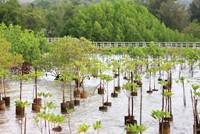Advertisement
Grab your lab coat. Let's get started
Welcome!
Welcome!
Create an account below to get 6 C&EN articles per month, receive newsletters and more - all free.
It seems this is your first time logging in online. Please enter the following information to continue.
As an ACS member you automatically get access to this site. All we need is few more details to create your reading experience.
Not you? Sign in with a different account.
Not you? Sign in with a different account.
ERROR 1
ERROR 1
ERROR 2
ERROR 2
ERROR 2
ERROR 2
ERROR 2
Password and Confirm password must match.
If you have an ACS member number, please enter it here so we can link this account to your membership. (optional)
ERROR 2
ACS values your privacy. By submitting your information, you are gaining access to C&EN and subscribing to our weekly newsletter. We use the information you provide to make your reading experience better, and we will never sell your data to third party members.
Sustainability
Governments are slow to put in place the policies we need for adaptation to climate change
Policies aimed at adaptation will help the world build resilient highways and other infrastructure
by Cheryl Hogue
February 10, 2020
| A version of this story appeared in
Volume 98, Issue 6

Credit: Toby Talbot/AP | After Tropical Storm Irene in 2011, Vermont replaced damaged drainage culverts with larger ones as it rebuilt flood-ruined roads, including the one shown.
Even if the world makes a serious effort to curb greenhouse gas emissions, some degree of climate change can’t be avoided. And it is already putting people at risk. Changing weather patterns and extreme events threaten critical infrastructure needed to keep society functioning. To protect their citizens and their infrastructure, governments at every level—from city councils to federal agencies—are beginning to consider these effects as they plan for the future.
Action is urgently needed. A recent report by the Global Commission on Adaptation pulls no punches: around the world, adaptation efforts are “gravely insufficient,” it says. While the commission stresses that adaptation is not a substitute for curbs on greenhouse gas emissions, its report, issued in September, concludes that investments in adaptation can generate significant economic returns—2 to 10 times their costs.
Each country’s climate change adaptation and resilience efforts face a unique set of challenges—political, geographical, and fiscal. These efforts are as varied as the geography and weather patterns of the world’s provinces and states. A temperate, mountainous locale will likely use different strategies than a low-lying tropical island. A country’s capacity to adapt also plays a role, with the world’s poorer countries less able to draw on their domestic budgets to finance adaptation projects, says Christina Chan, codirector of the Global Commission on Adaptation. The commission, formed in 2018 by 17 countries along with a group of business leaders, is led by former United Nations secretary general Ban Ki-moon with cochairs Bill Gates, the business magnate and philanthropist, and Kristalina Georgieva, managing director of the International Monetary Fund.
A look at the struggle to adapt to climate change and build resilient cities in the US—for example, when rebuilding after a natural disaster—shows what these efforts can come up against. The planning and design phases of new or replacement infrastructure are the times to factor in climate change. Failing to take expected future conditions into account “could make a huge investment completely worthless,” says Kristiane Huber, a resilience fellow at the nonprofit Center for Climate and Energy Solutions.
5 investments that would make us more resilient
Climate change adaptation investments in five areas could deliver significant benefits, the Global Commission on Adaptation says. In a recent report, the commission stresses that these areas represent only a portion of the adaptation work needed worldwide. Global investments of $1.8 trillion in these areas during the next decade could generate $7.1 trillion in net benefits, the commission says.

▸ Food: “A more resilient food future will rely on sharp increases in agricultural R&D,” the report says. It also calls for government financing and incentives for farmers to practice sustainable, climate-smart production as well as financing to boost the resilience of 500 million small-scale farming households that are likely to be critically harmed by climate change.

▸ Environmental protection: Natural systems provide important climate-resilience services—for example, mangroves protect shorelines, and trees help cool cities. The report calls for appropriate valuation of natural resources and their services in decisions involving land use and investments.

▸ Water: Governments should invest in ramping up the efficiency of water use, building resilient infrastructure such as water treatment plants, and integrating climate-related risks such as floods and droughts into planning decisions. Cities, meanwhile, need investments in resilience to tackle water- and heat-related risks. They also need to upgrade living conditions for people living in what the report calls “informal settlements” because these residents are highly vulnerable to the impacts of climate change.

▸ Infrastructure: Roads, ports, electricity-generating plants, sewer systems, and the communications grid need to be made resilient.

▸ Risk management: “We need to proactively yet voluntarily move people and assets out of harm’s way through better planning and investment decisions,” the report says. “At the same time, we need to scale up efforts to warn and prepare people ahead of disasters.”
Adaptation and resilience
Scientists are recording warmer temperatures, rising sea levels, more intense storms, less-predictable rainfall, and more acidic oceans. Longer summer heat waves can warp highways and dry up drinking-water supplies. More-intense floods can incapacitate public sewage treatment plants and destroy homes insured against flood damage with taxpayers’ money.
With this in mind, some local, state, and federal governments are beginning to incorporate climate change adaptation in a wide range of policies and procedures, requiring them to consider it when changing building codes or deciding where to site roads. They want to help society function in the conditions that climate change is bringing, keep people out of harm’s way, and protect public investments.
The terms adaptation and resilience are often used interchangeably, especially by government agencies in the US. But the terms have a fine difference in meaning to disaster preparedness practitioners.
Adaptation means making changes to account for a new state, such as a higher sea level or warmer year-round temperatures, to reduce risks, like inundation of buildings or drought, says Chan, who directs the Cimate Resilience Practice at the World Resources Institute.
Closely related is resilience, which is preparation to recover quickly from disruptions, such as floods. Chan says experts focused on reducing risks posed by natural disasters use the term resilience to describe the ability of a town, company, transportation network, or other system to bounce back to functioning after a disturbance.
In the end, the difference between adaptation and resilience doesn’t matter much, Huber says. “We need both.”
In the US, public policy action on adaptation is taking place mainly at the state and local levels.
For instance, the Port Authority of New York and New Jersey is integrating climate change adaptation into its policies and operations. People depend on the Port Authority for getting around in the greater New York City area—it operates the region’s three main airports, six major bridges and tunnels, and a commuter rail system. It also runs the third-largest seaport in the US.
In 2018, the Port Authority adopted design guidelines factoring in climate change resilience for new construction and major rehabilitation projects. Engineering and design standards must take into account projected sea-level rise for the region. The goals are for the authority’s facilities and infrastructure to withstand the impacts of intensifying natural disasters and to get cars, trucks, trains, and ships moving again quickly.
US coastal states, especially those with low-lying areas along the Atlantic, are passing laws—and some governors are issuing executive orders—requiring climate change adaptation efforts. For instance, a 2018 executive order on climate change resiliency from Virginia governor Ralph Northam requires the state to adopt a uniform approach to predict sea-level rise. In turn, those predictions must be taken into consideration as Virginia designs, selects sites for, and constructs new buildings. Rhode Island, meanwhile, suggests climate adaptation strategies for its cities and towns. These include incentives to encourage home builders along the coast to elevate the structures on stilts to protect them from coastal flooding damage.
Officials in the Midwest are taking notice of climate change, too, Huber says. States in the Mississippi River watershed are starting to consider adaptation efforts after they collectively suffered billions of dollars in damages from massive floods in 2019 after extreme precipitation events.
These concerns aren’t limited to concern about flooding and sea-level rise, Huber says. For instance, San Antonio, the seventh-largest city in the US, has adopted a series of water-use restrictions, each progressively tighter, that kick in depending on the decrease in the level of aquifer from which the city draws its water. And California is developing a “water resilience portfolio” of actions to help the state cope with rising temperatures, declining fish populations, and more extreme droughts and floods.
On the US federal level, the Department of Defense has had an adaptation road map since 2014. Otherwise, climate adaptation policies are scattered through the rest of the government, and there’s no coordinated effort or task force, Huber says.
Mixed messages
Thanks in part to this lack of coordination, policy barriers remain at the federal level, Huber and Chan say.
A prime example is what happened to Vermont after 2011’s Tropical Storm Irene. To rebuild roads damaged by flooding, the state had to replace hundreds of culverts, structures that channel streams beneath highways. Seeing an opportunity for positive change, the state opted to replace ruined culverts with larger ones, beefing up their stormwater-carrying capacity to avert future flood damage.
After it was declared a federal disaster area, Vermont turned to the Federal Emergency Management Agency for financial assistance. But federal policy reimburses the rebuilding of roads and bridges to their previous design or to codes in place at the time of the disaster. That left Vermont with a shortfall of more than $3 million for the new culverts. The state appealed, and eventually, FEMA covered the additional costs by considering them applied to hazard mitigation efforts. Although mitigation funding requires approval in advance, FEMA waived this prerequisite for Vermont.
It’s common policy at many government agencies that publicly funded projects are designed for current conditions. But some agencies can and do take future conditions into account, Huber says. Policies allowing taxpayer dollars to fund infrastructure built to withstand climate change are likely to, but don’t necessarily have to, drive up construction costs.
Further, the analytics that city, state, and federal governments use to support decisions about infrastructure often fail to take future climate risks into consideration, Huber says. A 2013 study found that when public entities worldwide calculate the costs and benefits of planned projects, they generally don’t consider the benefits of avoiding or reducing future damage (Disasters 2013, DOI: 10.1111/disa.12002). This omission creates a barrier to projects that will save money in the long term by increasing resilience to climate change but that might cost more up front, Huber says. She estimates that many such cost increases are as much as 5%. For that reason, these projects are difficult to push through. “It’s really challenging,” Huber says.
However, an alternative practice is catching the attention of some policy makers internationally, Huber says: adaptive infrastructure. This provides for modification of infrastructure over time as conditions change. For instance, supports for new bridges could be built higher and stronger, allowing for roadways to be raised as needed because of sea-level rise, she says.
Meanwhile, major organizations are working to push for these changes at the regional level and globally. To build on the Global Commission on Adaptation’s report and drum up more action, the Netherlands is hosting the Climate Adaptation Summit this October. The gathering aims to bring together leaders from government, business, and advocacy organizations to promote follow-up actions to the report. Representatives are expected from countries that helped launch the commission, including China, Canada, Germany, Mexico, South Africa, and the UK.
Strategies may differ from country to country, but one thing is clear, Chan says: “We need to adapt to a new normal.”




Join the conversation
Contact the reporter
Submit a Letter to the Editor for publication
Engage with us on Twitter